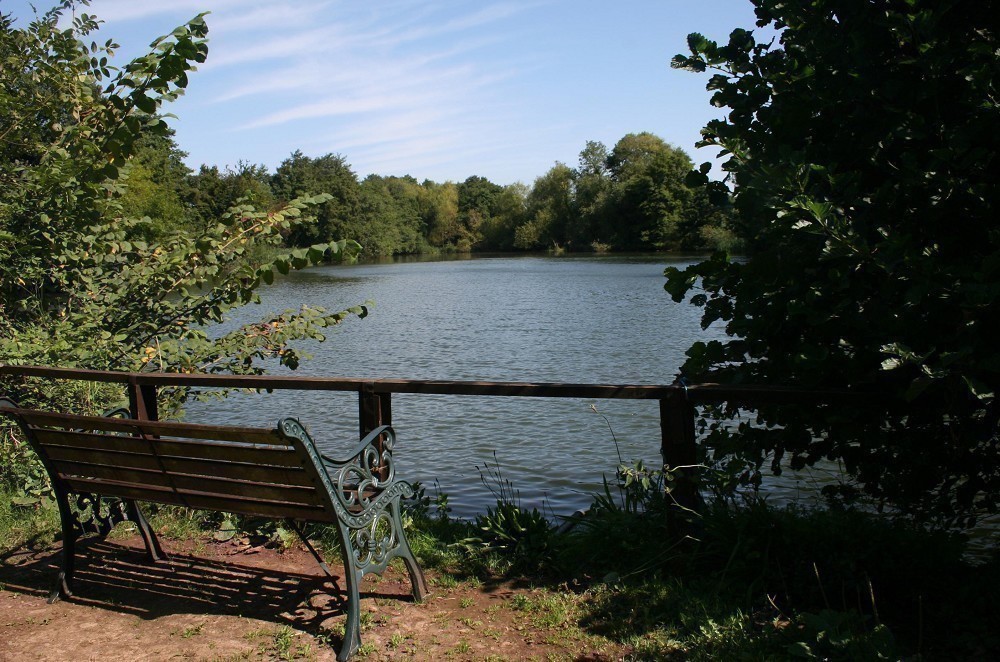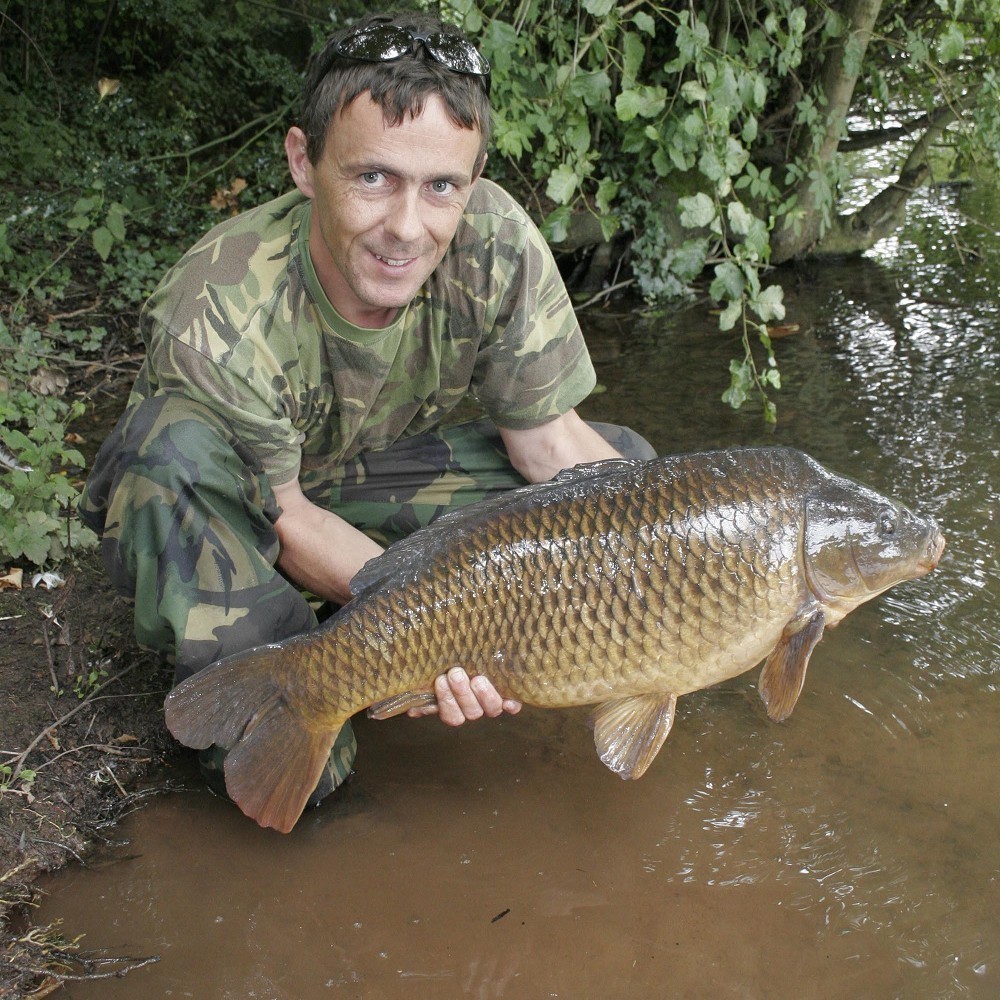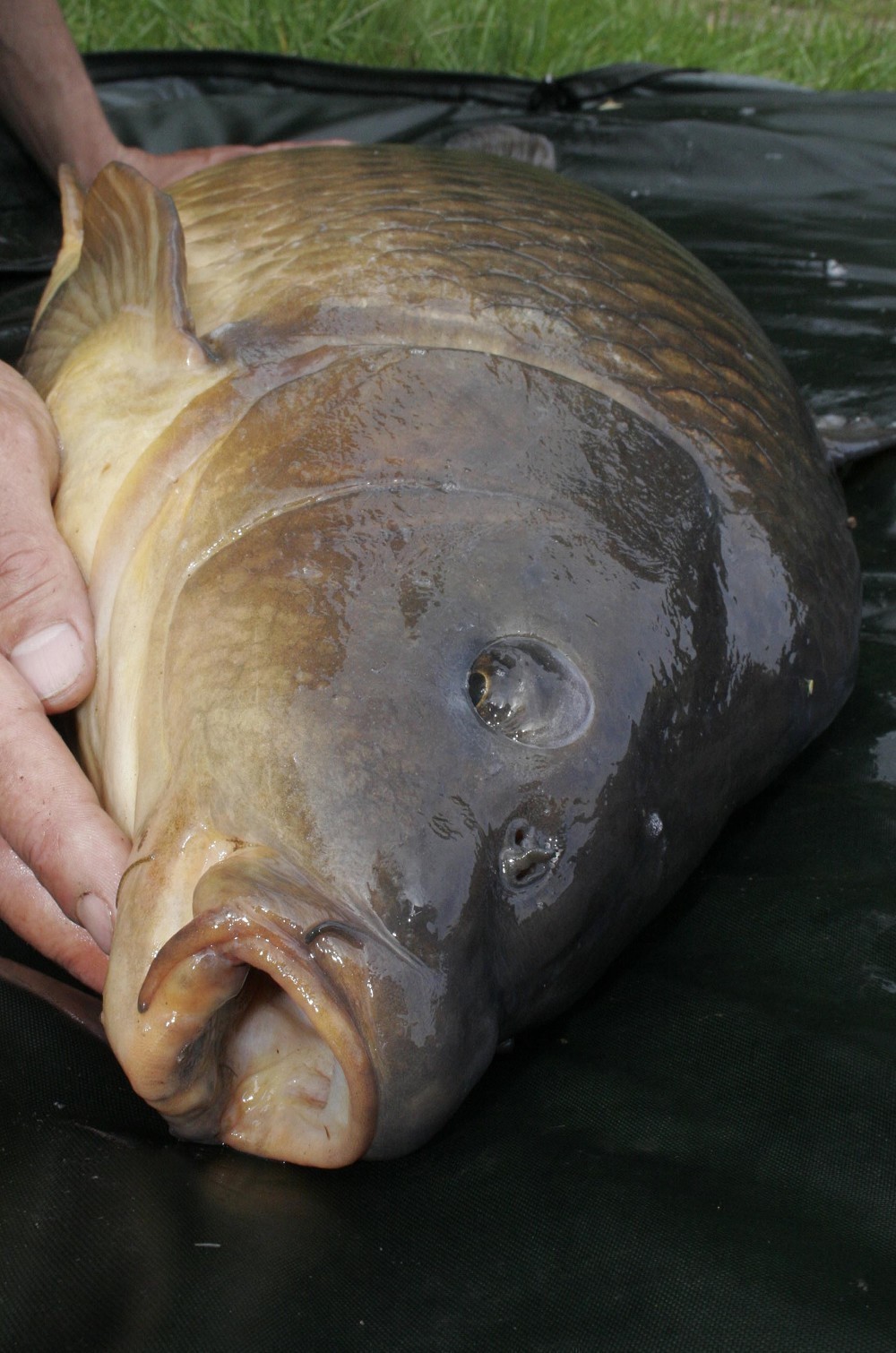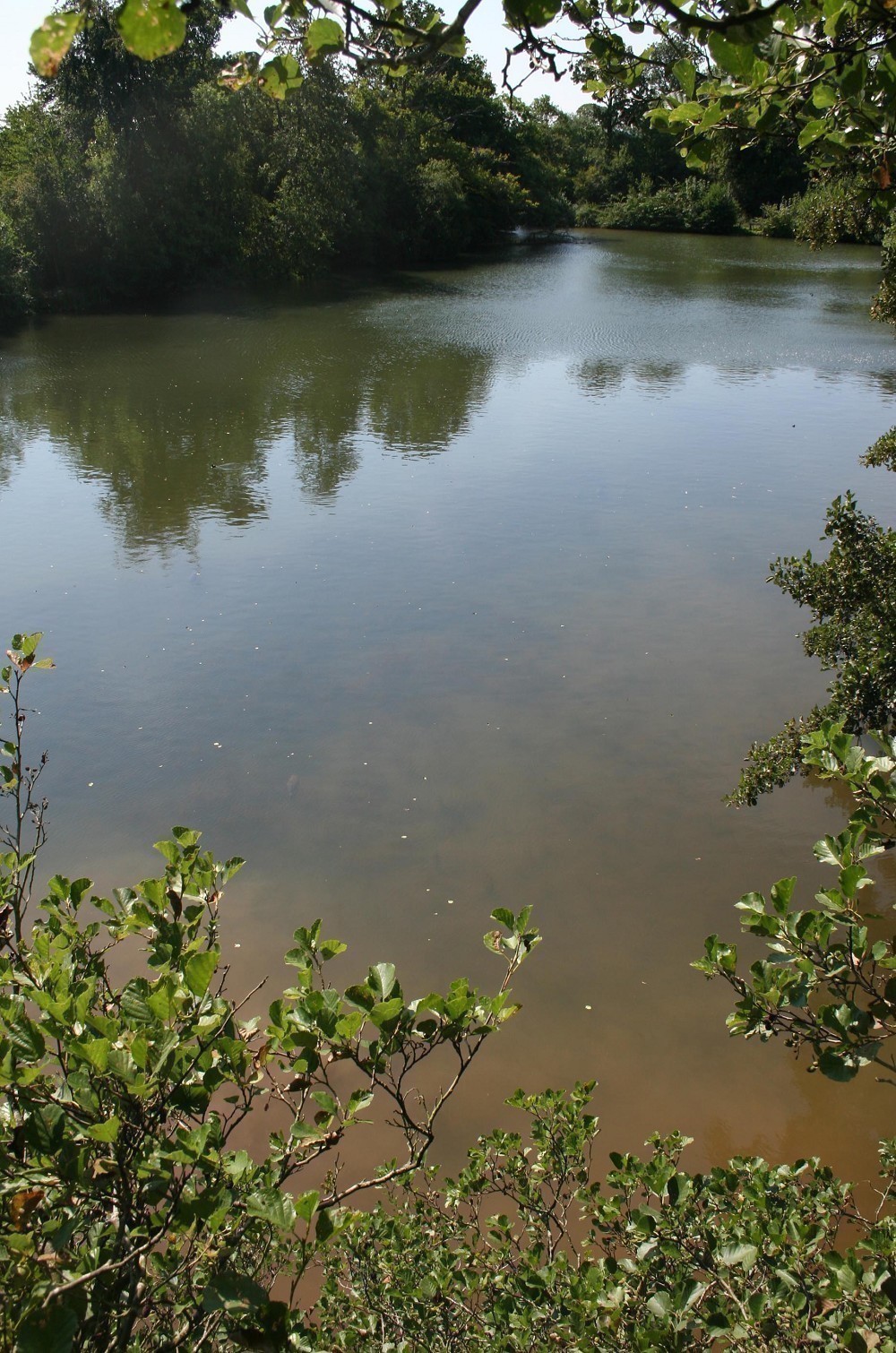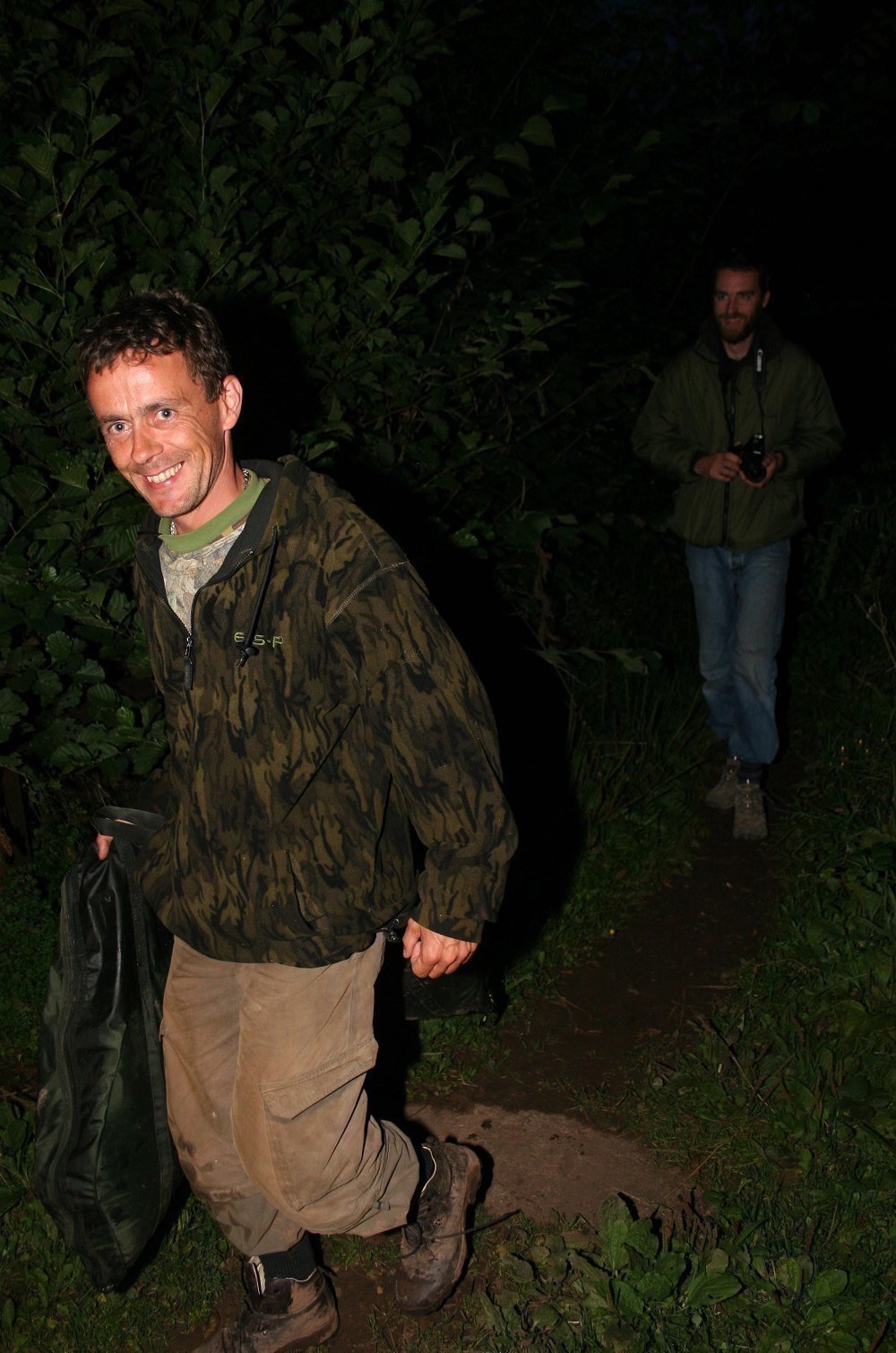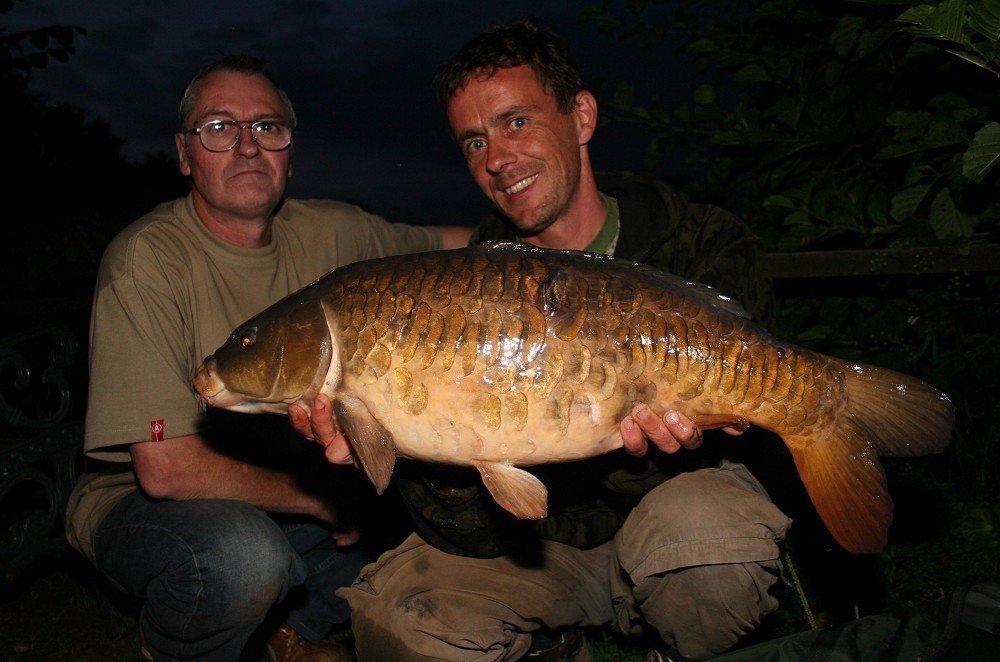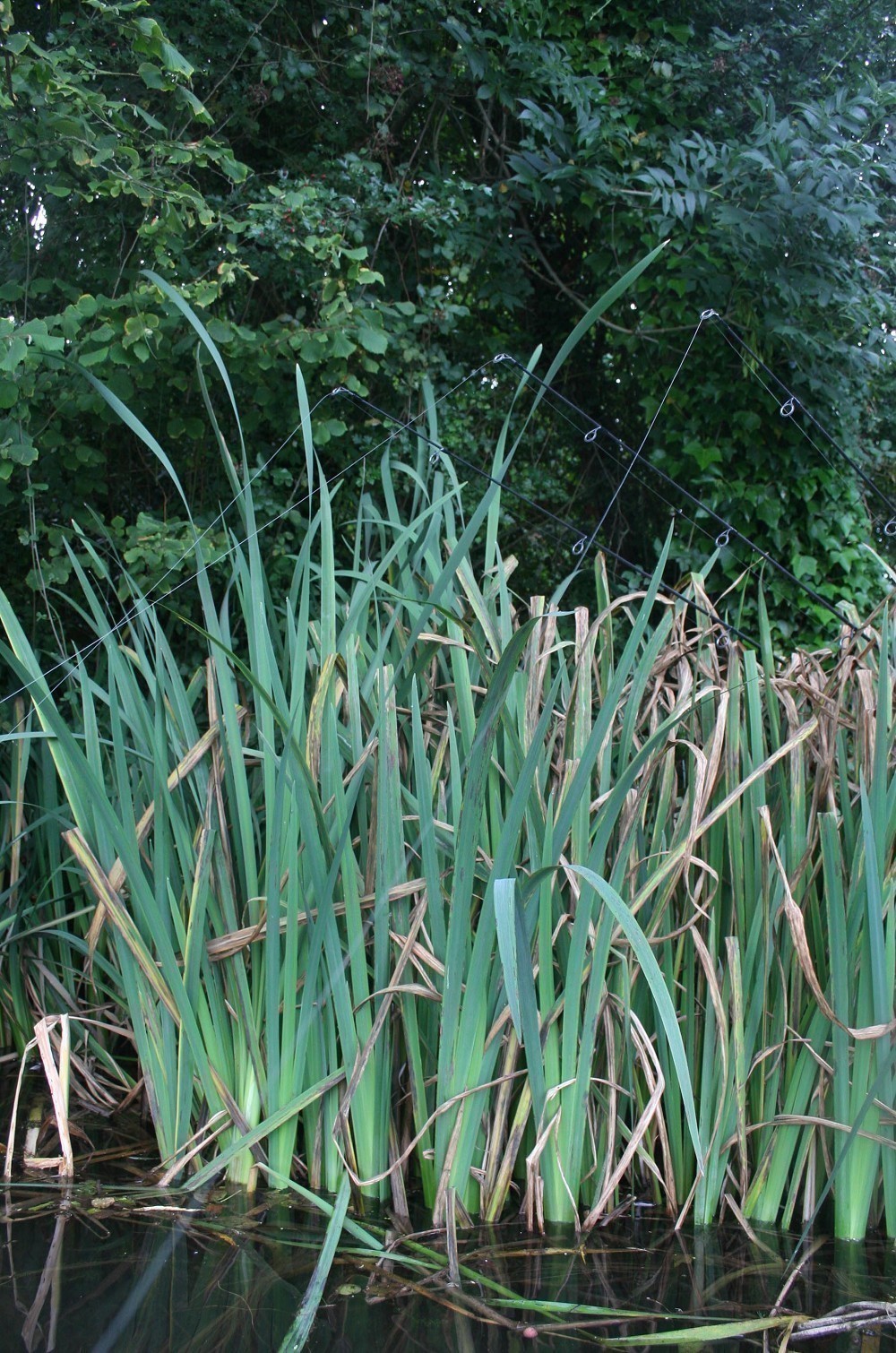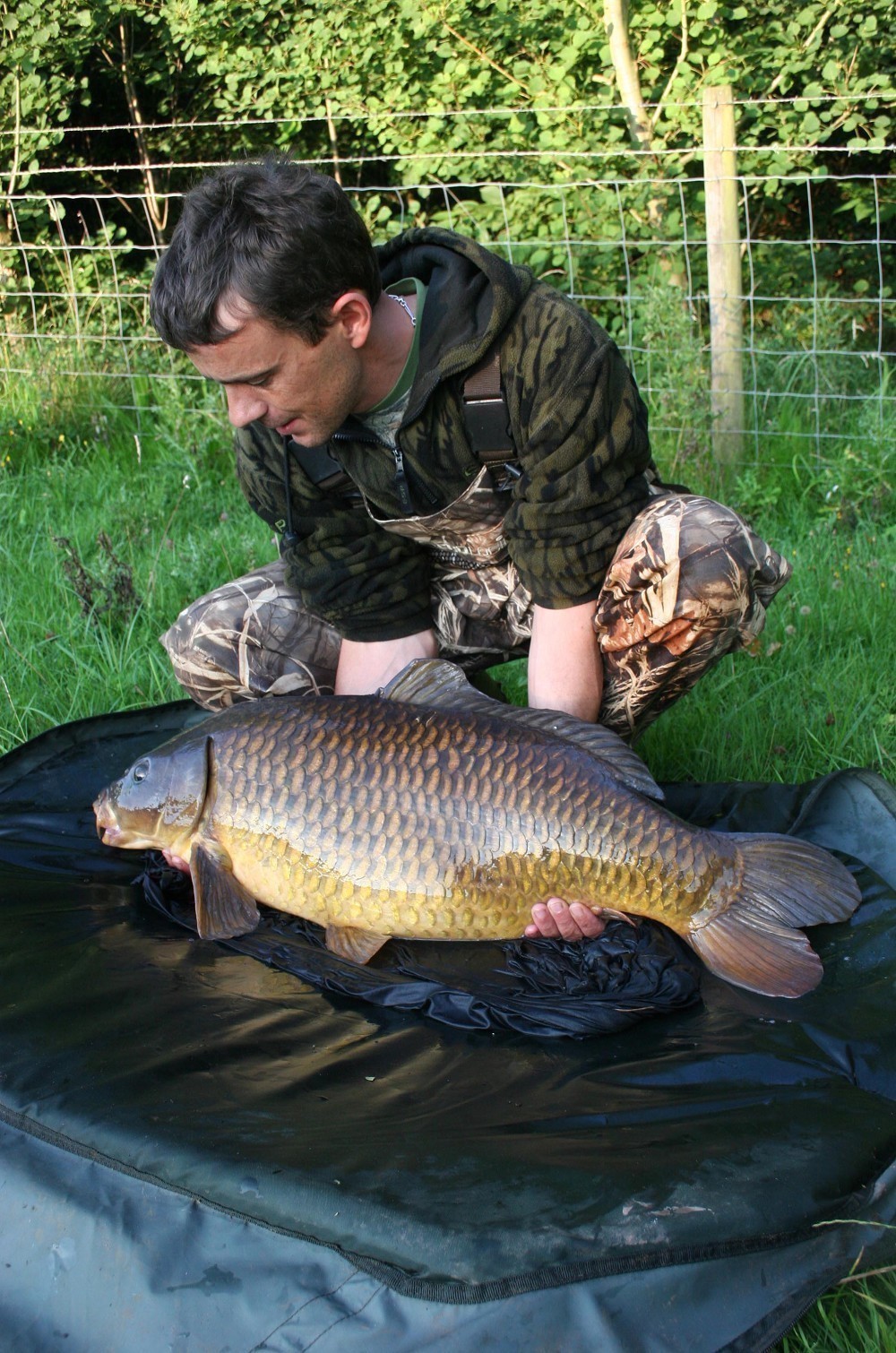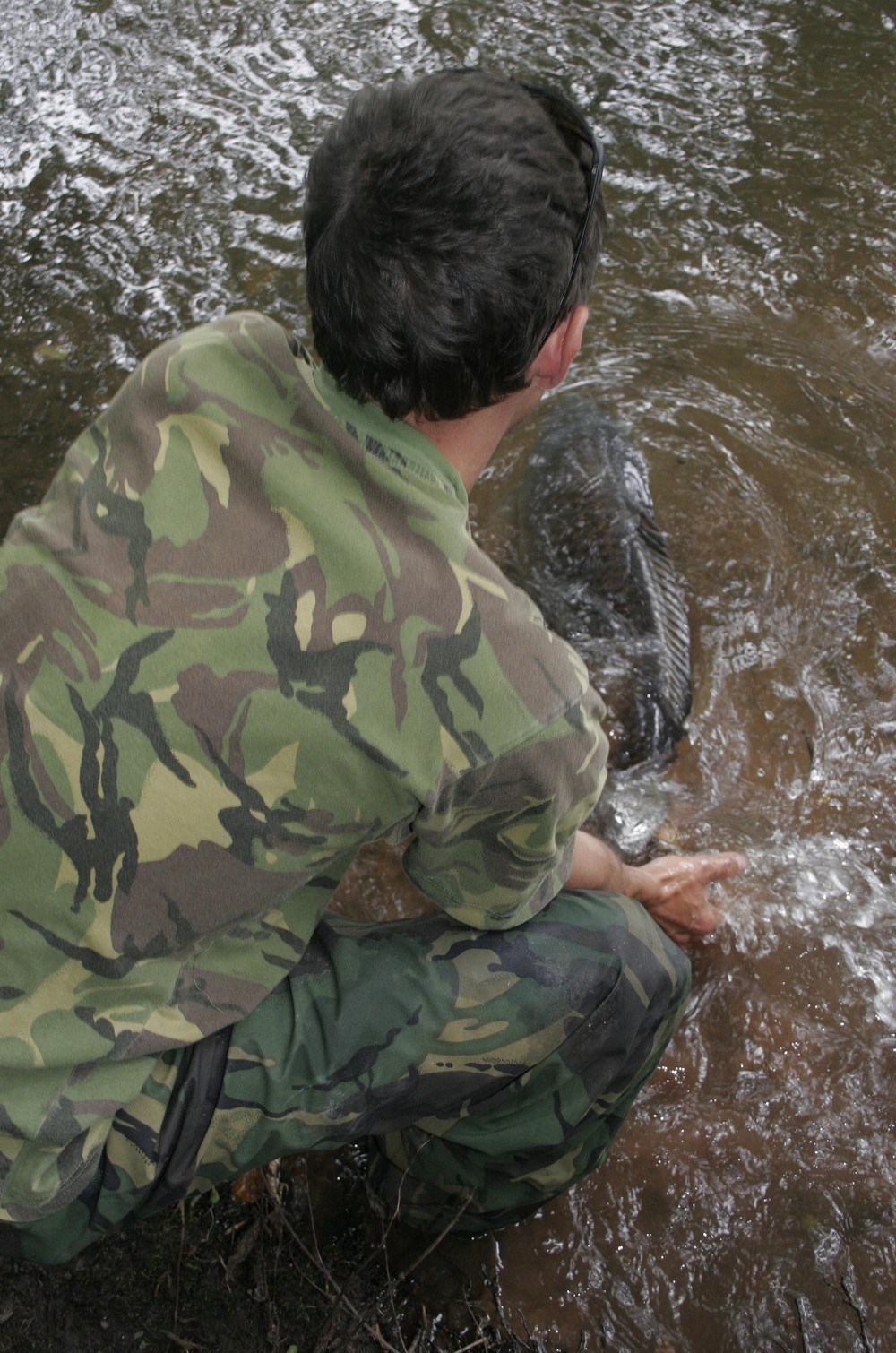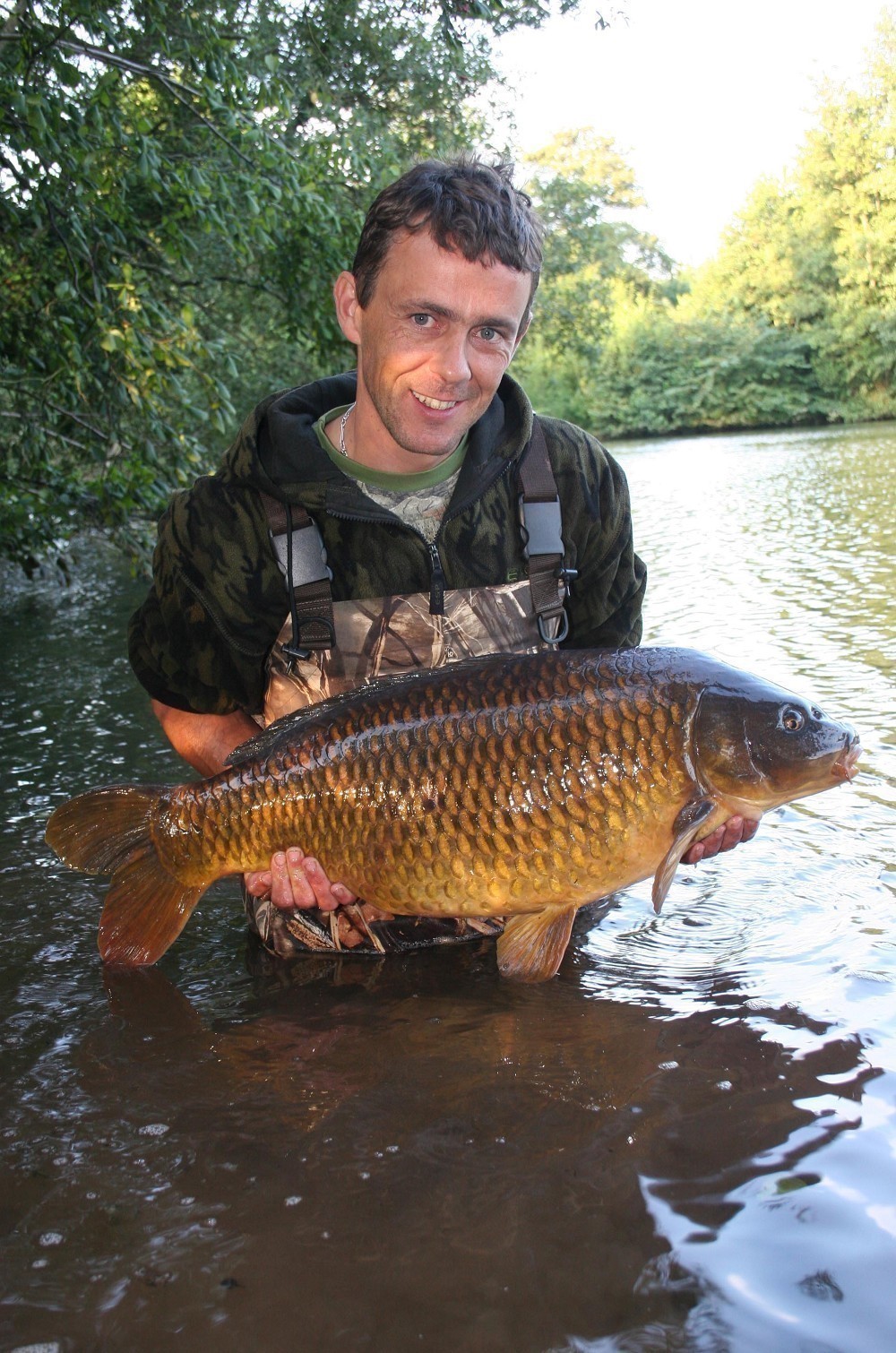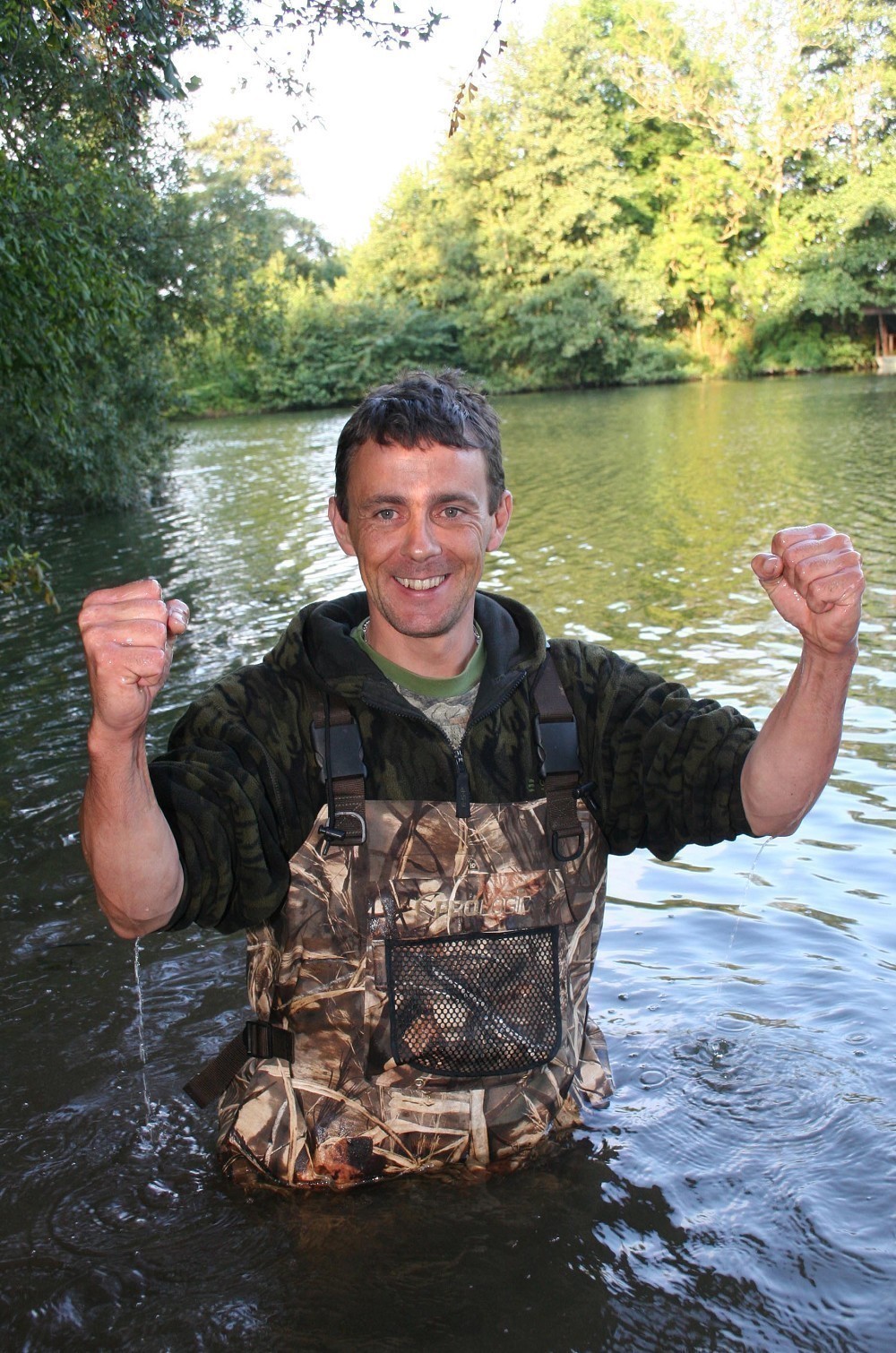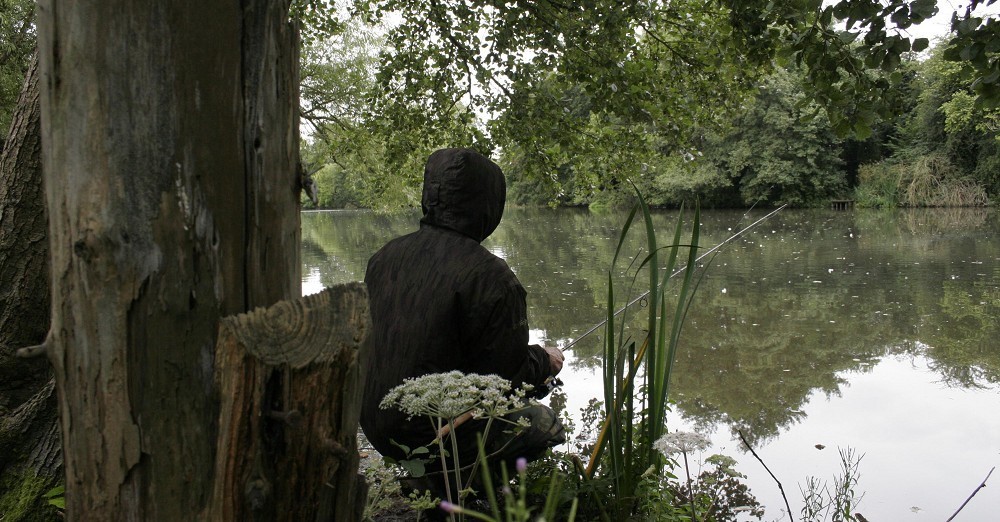
Sharpy blitzes Redmire
Back in 2007, Nigel Sharp caught 12 fish from Redmire in five nights, here's how he did it... #FlashbackFriday
On the 19th August 2007, Nigel Sharp made his first ever trip to the legendary to Redmire Pool for five days and nights. The lake that holds “some of the cleverest carp in the country” as Martin Locke once put it, now have to content with the mighty Sharpy.
The outcome was really quite predictable: he took the place apart but having 18 bites and landing 12 fish during his stay. Now we tell you story of how he did it….
"The obvious opening question, Nige, is how have you approached the lake? What was your starting point?”
“My initial starting point was to have a look around and see where the fish were and then base it around the outcome of that. That’s the same for all lakes really.
“It became apparent as we walked around the lake that the fish were everywhere, and after we’d climbed a few trees it looked like the fish were working a certain area, which is where we chose to fish.
“Once I’d found the part of the lake which the fish seemed to be working most, I wanted to get a bait amongst them were they were fizzing and bubbling up. Rather than delve into history and try what has been tried a million times over here, I thought I’d stick to what I know and from what I’ve read about this place: the soft bottom and the weed, I thought the old Chod Rigs would be the one. That was the initial starting point – a couple of Chod Rigs with bright hookbaits to see if I could get a quick bite.
You now: Have a seriously good look around your pond and find the main holding areas.
“Did you do much research before coming to Redmire?”
“I had a look through the Redmire Pool book, and obviously I’ve been carp fishing over a quarter of a century myself, so over the years I’ve read some much about the place.
“In some ways I didn’t want to start researching because I think your head can sometimes get confused and you think about all the different methods and approaches you could use and you forget what you’ve learnt from other pressured lakes which have worked. It was just a case of getting down here and working it out for myself.
“Obviously you’ve (the editor) been here a few times and know a little bit about the lake and a few little tricks and tactics that Lockie had told you about, like using large baits to keep the smaller fish off. With that in mind I did actually hand roll some larger baits.”
You now: Talk to other anglers, search the internet, and keep reading CARPology to find out tips, tactics and advice for your particular water.
“You mentioned you started off with Chod Rigs, which to some people might seem a bit crude seeing as the fish are under so much pressure, especially when fished in conjunction with bright Tutti’s. Is this something you’d do on any pressured lake and what’s the thinking behind it?”
“Time is short and it isn’t as if I’m coming here regular. It’s a one-off session. So with that in mind you stick to what you know. Chod Rigs have caught a lot of fish from very heavily fished waters anyway. I know Redmire has been fished for the best part of half a century and the fish have probably seen everything thrown at them, but I think sticking to what you know is the best form. Once you’ve had a day or two at it, you can then start adjusting your approach.
“I opted for a light lead so everything would sit on the silt, but I have known on silty lakes that pop-ups don’t tend to work and it’s normally a case of fishing short hooklinks and let the lead drag your bait into the silt. However, I thought I’d try them and see what happens.
“The first 24hrs were fished with Chod Rigs and not a great deal happened, so it was time for a bit of a rethink.”
You now: Be prepared to change rigs if things aren’t working out.
“After initially putting out your Tutti’s, you then picked three spots or areas to fish. Why did you pick these areas and what did you find?”
“The original areas that I cast to with the Chods were areas where a lot of bubbling was going on. I’m fishing a swim called Pitchfords and whilst I was tying on my baits I noticed three areas that were seeing a lot of bubbling, so I obviously flicked out light lead to those areas and left them for the afternoon to see what would happen before baiting up. I’d rather do this than go straight in with leading, feature finding and putting lots of bait out.
“Those areas I made my first three casts to where in fact the same areas I fished throughout week. I like to let the fish tell me where to put the hookbaits and it was clear that they like these three spots.
“Obviously when I wound in to sort the rods out for that night, I had a quick flick about with the marker float and found it was quite a choddy bottom, so I persisted with the Chod Rigs for another 24hrs. I did sprinkle some baits around them and changed over from Tutti’s to foodbait pop-ups, but nothing happened until I changed the rigs for the next night.”
You now: Watch the areas fish are feeding in, and when the time is right (i.e. they’ve moved off), flick the marker float out and have a feel.
“On that first night how much bait did you put in?”
“I was just putting out boilies and decided to put out 50 x 15millers and 50 x 20millers and my hookbait was a 16miller. I didn’t want to go putting out a kilo on a rod. They’re tight, little areas I’m fishing to, and a lot of bait on a small spot isn’t really the one.
“These fish are obviously very wary fish and I thought that the more bait I put out, the more I’m cutting down my chances of getting a bite. 100 baits on a tight area is more than enough really. I thought the different sizes might trip them up too.”
You now: Use a mix of different sized boilies.
“You like to soak your boilies in trout pellet oil, why do you do that and is it something you could do with all boiled food?”
“I’ve soaked my baits in oil during the warmer months for a long time now. I have found it does work well on silty and very mature lakes, like Redmire because although the oil does leak off and come to the surface helping pull fish down, it seems to create a barrier around the bait to stop the horrible smell of the silt soaking into it. Eventually of course the bait will take on the smell of the silt, but it will give it that little bit longer before the bait starts smelling rank.
“It does work with all sorts of bait, but I must admit I do prefer it with fishmeal-based bait, because obviously it’s a fish oil, but I do know people who have done well using it on birdfoodbased baits. There are loads of different oils you can use like nuts oils and fruity oils. It’s just a case of finding one you like using. For me though, I’m a fishmeal angler, and that equals fish oils.”
You now: Get yourself down to the tackle store and purchase some oil before it gets too cold.
“Looking through the logbook at Redmire and reading and talking to anglers who fish other pressured lakes, they all seem to do the “bit fishing”; a little pinch of this, a tiny handful of that, half a tiger nut and three grains of corn. Do you think that can be a mistake and sometimes it’s better to just go in with boilies?”
“I did consider that, and after you got a bite very quickly on a little sprinkle of pellets and a tiger nut, I thought, ‘ooh, that might be the way to do it.” So I did sprinkle a little bit of pellet and hemp on a few spots in the swim up from my main one, but what I did notice in the margins was the odd tiger that had gassed up and floated up off the bottom. In the logbook I noticed someone has done well using maize and tiger nuts, but seeing a few tigers floating up I thought maybe they’re not eating as many as you’d like to think they are.
“I brought a fair amount of boilies with me and I do tend to do better when I just boilie fish and once I’d changed my rigs and got a run off the bottom fishing over different sized boilies with a Hinged Rig, that’s what I persisted with.
“I think on small lakes some people are a little bit frightened to put too much bait in as well. Hundred baits is a lot of bait on one small spot, but don’t be afraid to put it in sometimes. Personally I wouldn’t hump in five kilos on a spot in a lake like this because you’re after one bite at a time.
“I did notice that putting out the trout pellets and the glugged boilies that quite often the fish were quick to get on them – literally within half an hour they’d be sheeting up over them.”
You now: Look for signs of gassed up bait that the fish obviously haven’t been eating. And don’t be too afraid to put some bait out.
“After fishing Chod Rigs for the first 24hrs you changed over to Hinged Stiff Links, why was that?”
“I was a little bit puzzled because I was seeing a lot of fizzing over the areas, but I still didn’t get a bite off the Chod Rigs. The first few hours were fished as singles, so you can expect them not to find it or just spook off with the leads going in.
“Then that night I fished them over a little bit of bait and still no activity yet fish had fizzed on it, so I knew it wasn’t working. I was thinking I’d have to come up with a bottom bait rig, but after having a little flick around with my marker rod across the same areas they were obviously a little bit cleaner and I remembered you said you’d done quite well using the Hinged Stiff Rig a few years back. Being a bit of fan of this rig, I decided to tie a couple up.
“I used a fairly long boom section, around 12-inches and moved the stop up the leadcore about six-inches to allow for the soft bottom and then put them out. One of the rods had been out for twenty hours and then I had a take on it. That could have just been a one-off, but the following night on another area, one which I had left a Chod Rig on for another night and then changed for that night to a Hinged Rig, I had another take. That was obviously the clue that that extra bit of movement made all the difference.
“I’m putting out a 100 baits onto tight spots and I think that extra movement really helps in that situation. Chod Rigs are better with less bait or more scattered bait. Plus with a Hinge Rig you can fish a popup slightly lower to the bottom than you can with a Chod Rig because it’s bridging across everything and can sometimes lot a little to blatant at times.”
You now: Get on the Hinged Stiff Link Rig! We’ve even done a handy step-by-step guide which you can cut out.
“When boilie fishing the key is to spread the baits about to get the fish moving and dipping. However, you said to me that now you’re fishing Hinged Stiff Links you’re keeping the bait really tight. Why is that?”
“Because there’s weed and a bit of Chod around on the bottom, I thought because they tend to sheet up all over your spot, the more you spread the bait about, the more they’re going to feed off into the weed rather than feeding on the clear area. So if you put it on a plate, over a short period of time the fish will clean the area and it will get harder and harder.
“I thought that if I bait accurately, right on top of the spot, and if you get a few fish come in on the area, they’ll be a bit of competition and confusion and hopefully one of them will pick the hookbait up.
“With the mechanics of The Hinged Stiff Rig, once they’ve mouthed it, they don’t often get away with it. That’s why I wanted to keep it all tight and I knew I’d have a collection of different sized baits all around my hookbait rather than spread out where they could maybe have time to thinking about each one before eating it.”
You now: When using Hinged Stiff Links on tight spots, bait up tight. Choddy user? Spread it about a bit.
“Going back to the spots for a minute. These areas were selected because you found fish feeding on them when we arrived. Was it just coincidence that those areas seemed to be along their patrol routes?”
“They are definitely patrol routes. One of the close in spots that we’re both fishing is at the back of a marginal weedbed which they’re up and down; it’s like their mini M25 from one end of the lake to the other. They might well have been feeding on leftover bait(s) from the previous anglers. There’s the old thing about Redmire that as soon as the gates shouts they all start feeding! They might not have known we’d come in.
“The fish did seem to feed along certain routes without a doubt. One area is not such route and I’ve still not had a bite
off it, but they did have a good old feed on it and they’re visiting it, but it doesn’t seem to be the one and yet it’s the hardest, firmest and best areas I’ve fishing all week. Maybe it’s a too bigger area?”
You now: Observe the patrol routes of the carp and set trap(s) accordingly.
“You counted out the amount of boilies you were going to put on each rod, each night. Why did you count them for?”
“I really wanted to know what I was putting out. If you’re just putting out handfuls of bait you don’t have any control over what’s going in. One day you might be putting out 100 baits and the next day it might be 150. I wanted to know exactly how many.
“I don’t really know why I picked 100 baits for each rod. It just came into my head that 50 baits of each size would be about right.”
You now: Count your baits out for firing them into the water. This way you can work out better what’s going on down there.
“Do you think the time at which you put your baits out for the evening is important?”
“The first thing I do whenever anyone has a bite, even myself, is to check the time. The first was obviously your fish, which was 6 o’clock in the evening, so I thought that would be a bad time to be baiting up. I needed to be getting it done well before that.
“I think it was Dick Walker who wrote that ‘with carp fishing the swim needs four hours to settle’, so you really need to be getting things done three or four hours before first initial bite time so that would be mid-afternoon.
“That’s a good time really, because it’s a tricky time with the floater fishing, so you have a break from that and get the bottom bait rods sorted for the evening. From what I worked out from the first couple of days and the fish we caught, the best time to bait up was maybe between midday and three in the afternoon.
“We also did our rods at the same time, which again means minimum disturbance because we’re doing all the rods in one go, within the space of an hour and the next 23hrs there’s no leads hitting the water.”
You now: Check your watch every time someone catches a fish.
“Let’s talk about sinking your line now. You said to me I was doing it wrong, and by doing it your way the line lays far better. How are you doing it?”
“Fishing over this nearside marginal weedbed and it’s obviously the same on the far back, but I’m fishing the near side of it to us, you’ve got a little bit of clear water in the middle. I’m using 6ft of leadcore and a little bit of putty at the top of it to ensure it all holds the bottom. Once I’ve cast out and the lead has touched down, I let everything fall slack and then sink the line, but try and keep it as slack as possible.
“The last bit which will be over the marginal weed closest to me, I make sure everything is sunk beyond that but leave that last bit on the surface so that once what you’ve already sunk is settled out in the open water and last bit is draped over this marginal weed and not pulled tight. I let this last bit settle on its own accord, which results in a seriously slack line.”
“I noticed you tend to tighten up to your lead and then sink your line before slackening off, but by doing that the marginal weed is almost trapping your line once it’s below the surface.
All you’re really doing is slacking the line off between rod tip and the weed in close and the rest of it is all tight.”
You now: Do exactly what Nigel has just said.
“These carp very clever (very crafty!), especially from what we’ve seen from the surface fishing. You’ve fished plenty
of waters like this i.e. Yateley, so what do you think are the key elements?”
“I think hiding the end tackle is important, but finding the spots and the position of the hookbait is critical too. The way you bait up and making sure you don’t drop bait up your main line, instead getting it nice and tight around your hookbait.
“They have seen everything, but a lot of the time I think it’s the way they’re conditioned to feed as well. You have anglers down here seven days a week, each of them fishing with a different approach, so they’re not regularly seeing the same thing all the time, so they can be tripped up although they have seen it all over the years. Just by watching it’s clear they’re very clued up fish.”
You now: Camo your end tackle up, but most importantly you find the correct spot(s) to put your hookbait – and then bait up accurately.
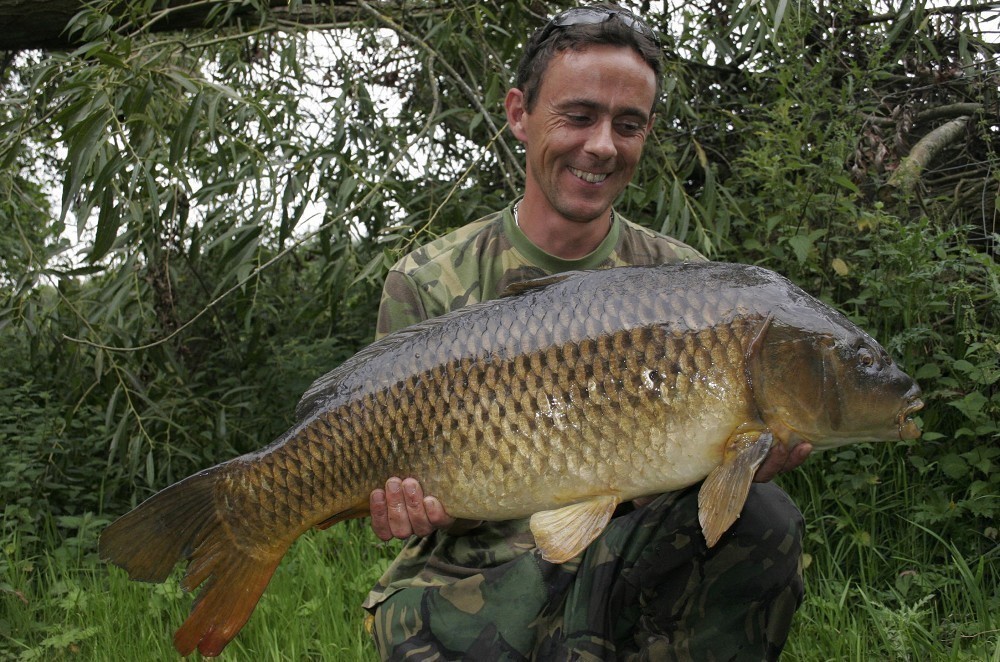 “This is the wariest carp I’ve ever caught,” Nigel told me. It was older than him and inspected each Mixer for about 30 seconds!
“This is the wariest carp I’ve ever caught,” Nigel told me. It was older than him and inspected each Mixer for about 30 seconds!“For the last few nights you said you’ve heard a big fish crash out in the hours of darkness down the bottom end of the lake (towards the dam), on such a small lake do you believe those big fish will move back to same area each night?”
“There’s be a pattern on here everyday: in the morning the fish would come from our left (from the dam) to our right (down to the shallows) and by 10/11 o’clock in the morning there wasn’t really anything in front of me; they were all down in the shallows for the day.
“As the day went on you could see the fish fining out and heading back down towards the dam end for the evening. There were always fish up and down the lake, but the main groups did tend to head towards the deeper water for the night.”
You now: Stay up late at night and listen for fish crash. Next morning, set your traps where you heard them.
“Have you found on other small lakes, like The Road Lake for example, that certain big fish will have certain areas of the lake that they will always go back to in the evening?”
“On The Road Lake the fish would always head for the snags. They would swim about over the weed during the day or they’ve visit a snag near The Reeds Swim. In the heat of the afternoon they’ve been down in The Grassy No-End, but then they’d go to the complete opposite end (The Snags) in the evening.
“Why they do that might have something to do with everyone sorting their rods out in open water, so they go and hide in the snags in the evening. When I’ve popped back over there in the last couple of years, the fish are still doing the same old routine.
“I’m so in touch with The Car Park Lake now, but there seems to be certain times of the year they like certain swims or certain areas. Going to the other end of the scale, on Burghfield (over 100-acres) during certain weeks of the year you’ll see certain fish in certain areas! Big fish are creatures of habit.”
You now: Note where the fish are moving to and from and get everything in the water when the time is right.
“Stealth is a major part, especially on a lake like this, do you think they know you’ve arrived the moment you open that gate?”
“This lake has been fished for donkey’s year and it’s constantly under pressure other than in the close season, so I think the fish always know they’re being hunting. If they have a break at the moment, it’s literally a space of one or two hours.
“I would imagine a lot of people who fish here are probably very stealthy anglers anyway. Yatesy have written about how they can here the sound… (BLEEP, BLEEP, BLEEEEEEEPPP… Wathefu…? –The editor’s buzzer has just screamed off! 10lb common was the outcome.)
“Before we were rudely interrupted! There’s an old saying that they can hear you come in through the gate. I’ve had things like this on other lakes; you try and close the gate as quietly as you can. It does help with the stealth approach.”
“Even when you’re up the tree I still think they can see you sometimes. The fish are looking up as they swim about and a little bit of glint off your watch or Polaroids can spook them. You can even spook them with what you’re wearing. I’ve definitely spooked fish from up the tree wearing a black T-Short or hoodie, so obviously the stealthier you can be on these smaller waters the better.”
You now: Get down to the Army Surplus store and get camoed up!
“One tactic that proved to be very successful this week was floater fishing. Do you think this is something that not a lot of people do on these pressured waters on the basis that is can be hard getting them to feed?”
“A lot of people just don’t get to grips with floater fishing. They fire out a few Mixers, the fish maybe take one or two and then leave it and the angler gives up.
“We’ve been quite fortunate this week as in there’s very little weed touching the surface, which is a bit of a rarity for this place and as a result it has made the fish move about a lot more in the upper layers. One of the first things I said before we’d even completed a full lap of the lake was “they’ll have a Mixer” because you could see them cruising up and down the lake all the time.
“If you’re going to have a good go at floater fishing, it’s a case of feeding them all day long. And the earlier you start feeding them the better. On that first morning I could see fish in the upper layers within the first hour of light, so straight away I put out a few pouchfuls of Mixers and straight away they started taking the odd one.
“I didn’t waste anytime getting a controller float out there and that was went I realised how finicky they are when it comes to the hookbait side of it. They’ve seen a lot of Mixers over the years! It was then a case of fining it all down: 8lb hooklinks instead of 10lb and size 11 hooks instead of 10’s. I use a pop-up as my hookbait and it was a case of really picking them down to as small as I could, but still trying to make it resemble a freebie. They’re bloody hard to catch!
“If you want to catch them, you’ve just got to keep at it. I can’t sit and watch fish cruise up and down on the surface in front of me and not do anything about it. It does take time and patience, but it works, so I’m help to put the hard work in.”
You now: Take a selection of different sized hooks and breaking strains of hooklink material. Try a shaved down Dynamite Bait’s Monster Crab pop-ups as a hookbait.
“On here it seems impossible to get the fish really competing for the Mixers, so you were introducing your hookbait very early on or after a pouchful of Mixers. Is this something you do a lot?”
“The thing with these fish is they don’t get concentrated into one group and eat everything in their path. They seem to come through in little groups of five or six and then nail half a dozen Mixers before going off again.
“I obviously tried putting loads of Mixers out and create a frenzy, but that wasn’t the way forward. The best thing to do was put out two or three pouchfuls, wait until the fish had visited that patch and taken a few before moving off. I’d then cast out beyond the patch and wind the controller back into the edge of the Mixers and then just hoped that same group of fish would come back through and have another little feed. That did seem to be the way to hook them.”
You now: Be prepared to cast out straight away and not get them feeding to confidently.
How Nigel's week panned out...
Day One - Sunday
I started off with Chod Rigs casting at the fizzers for the first few hours. Joe got a bite at 6ish, so I made a mental note of that. I then baited the spots where I’d seen fish bubbling with 100 baits. No joy that night. Weather: Overcast with a cool westerly breeze blowing start into the swim.
Day Two - Monday
There was a bit of fizzing in the morning, but there were fish in the upper layers within a couple of hours of light, so I fired out some Mixers, which they started taking. I then lost one, but shortly afterwards had two small commons. I then lost a couple more up in the shallows, so got the bottom rods sorted. Changed over to Hinged Stiff Links. Weather: Still a bit overcast.
Day Three - Tuesday
The following day had another go for them off the top in the Shallows but no job. I then had a take at midday on one of my bottom rods, which was a 21lb 4oz common. I decided to carry on with the floater fishing for the rest of the afternoon and had a really old 19lb 4oz common and two small common, but unfortunately lost another three off the top. Got the rods sorted early afternoon and that night I had a 25lb 1oz common over hundred baits. Weather: A bit sunnier.
Day Four - Wednesday
Got off to a good start with an 11lber off the top from down in the shallows. Later that evening whilst Les, Martin and Dan were visiting I had a 15lb 4oz fully scaled on a Hinged Stiff Link, which again was over 100 baits. Weather: Sunny during the day, but a cold wind in the evening.
Day Five - Thursday
I was back to the surface fishing again and managed a 12lb mirror early on. I lost a good fish and had a number of refusals. The fish were starting to become cagier on top now, but the big fish were starting to take the Mixers a little bit more readily. Weather: Sunny.
Day Six - Friday
The rods are still out, but nothing yet, although it does look good for a bite, as Joe has just proved by landing a lovely 12lb fully. The weather has improved all week, so the later part has been more surface fishing. Weather: Getting hotter all the time. Home time…



